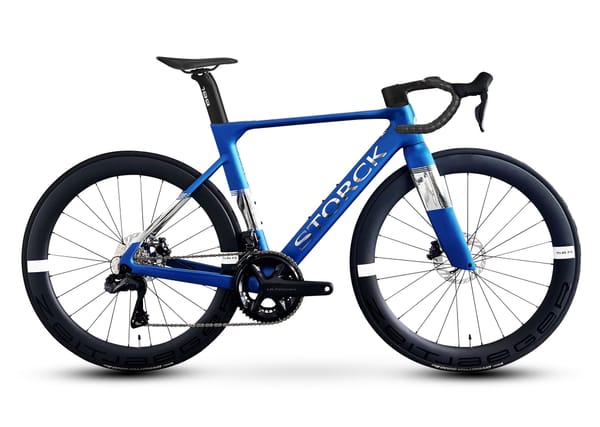Intermittent Fasting and Cycling: Benefits, Challenges, and Training Recommendations

In the realm of cycling, where endurance king and speed is queen, every cyclist is on a perpetual quest to optimize their training and nutrition to stay ahead of the pack. One such nutritional strategy that has been pedaling through the cycling community is Intermittent Fasting (IF). Bradley Wiggins, for example, used fastest training to shed weight, before riding the 2012 Tour de France which he went onto win.
It’s not just a fad; there’s science backing it up, and some cyclists swear by its benefits. But like any steep trail, it comes with its set of challenges. Let’s dive into the interplay between intermittent fasting and cycling training, and see if it’s worth integrating into your cycling regimen.
The Science Behind the Pedals 🚴♂️
Intermittent fasting isn’t about which foods to eat, but rather when you should eat them. The most common method, the 16/8 method, involves fasting for 16 hours each day and limiting your eating window to 8 hours. This pattern of eating could potentially shift your body’s metabolism, encouraging it to burn fat instead of storing it.
Fasted training can program the body to burn fat more efficiently. When you cycle in a fasted state, the theory is that your body taps into fat stores for energy, which could be beneficial for endurance athletes by reducing your dependence on exogenous carbohydrates to achieve performance.
The Uphill 📈
Endurance Enhancement: Fasted rides in the morning before breakfast can train your body to utilize fat as fuel, which is a vast energy reservoir compared to glycogen. This can be a game-changer for long-distance gravel grinders and bikepacking adventures where endurance is key.
Weight Management: IF can be a useful tool for weight management, which is crucial for cyclists looking to maintain a competitive edge. A leaner body can make those uphill climbs a tad easier.
Insulin Sensitivity: Intermittent fasting can improve insulin sensitivity, ensuring that your carbs are used for energy rather than being stored as fat. This is crucial for refueling post-ride and ensuring that the glycogen stores are replenished for your next ride.
The Downhill 📉
Strength and Sprinting: While the endurance realm may reap the benefits, the story might be a bit different for sprinters. The lack of readily available glycogen during fasted training could potentially hinder high-intensity efforts and strength training sessions.
Potential Overtraining: There’s a fine line between training hard and overtraining. Fasting can potentially push you over the edge, leading to overtraining or injuries if not monitored closely.
Nutrient Timing: The restricted eating window can make it challenging to get all the necessary nutrients to support recovery and muscle repair, which is crucial for any cyclist.
Training Recommendations 📋
Training Length: The length of your training rides while fasting largely depends on your fitness level and goals. For beginners, starting with shorter rides of 1-2 hours and gradually increasing the duration as your body adapts to fasted training can be a prudent approach.
When to Use IF in Training: Incorporating IF during your off-season or base training phase can be beneficial. This is a time when the focus is on building aerobic endurance rather than high-intensity efforts.
Best Types of Workouts: Low-intensity, steady-state rides or aerobic endurance rides are best suited for fasted training. These rides train your body to utilize fat as fuel without pushing you into the red zone.
Caffeine Kick: A cup of black coffee before your fasted ride can not only wake you up but also ramp up fat oxidation. However, ensure it doesn’t irritate your stomach, especially in a fasted state.
Performance Metrics 📊
The effects of IF on performance can vary. Some cyclists may find improved endurance and better body composition, while others might experience a dip in endurance and/or high-intensity performance. It’s essential to monitor your performance metrics, like power output, heart rate, and perceived exertion, to understand how IF is impacting your training.
Key Studies on Fasting and Exercise: A Quick Glance 📚
- Excess Postexercise Oxygen Consumption After Various Exercise Intensities (2016)
- Tucker WJ, Angadi SS, Gaesser GA.
- This study explores the oxygen consumption post high-intensity, sprint interval, and continuous steady-state exercise, shedding light on metabolic responses.
- Effect of Overnight Fasted Exercise on Weight Loss and Body Composition (2017)
- Hackett, D.; Hagstrom, A.D.
- A systematic review and meta-analysis investigating the impact of overnight fasted exercise on weight loss and body composition.
- Interval Training in Fed or Fasted State on Body Composition (2013)
- Gillen JB, Percival ME, Ludzki A, Tarnopolsky MA, Gibala MJ.
- This research examines how interval training in a fed or fasted state affects body composition and muscle oxidative capacity in overweight women.
- Training in the Fasted State on Glucose Tolerance During Fat-rich Diet (2010)
- Van Proeyen K, Szlufcik K, Nielens H, Pelgrim K, Deldicque L, Hesselink M, Van Veldhoven PP, Hespel P.
- The study delves into how training in a fasted state can improve glucose tolerance during a fat-rich diet.
- Exercise with Low Glycogen on PGC-1α Gene Expression (2013)
- Psilander N, Frank P, Flockhart M, Sahlin K.
- Investigating the effects of exercising with low glycogen levels on PGC-1α gene expression in human skeletal muscle.
- Interleukin-6 Contribution to Early Fasting-induced Free Fatty Acid Mobilization (201)
- Wueest, Stephan, et. al.
- This study explores how interleukin-6 contributes to early fasting-induced free fatty acid mobilization in mice.
- Overnight Fasting Impact on Sprint Interval Training and High-intensity Aerobic Endurance (2019)
- Terada T, Toghi Eshghi SR, et. al.
- Examining how overnight fasting affects exercise intensity and volume during sprint interval training, and its impact on high-intensity aerobic endurance.
The Ride Ahead 🚴
Intermittent fasting can be a powerful tool in a cyclist’s toolkit if used wisely. It’s not a one-size-fits-all approach, and what works for one cyclist might not work for another. It’s all about finding what gears well with your body and cycling goals. So, whether you’re grinding gravel or sprinting through singletracks, understanding how IF can impact your performance is the first pedal stroke towards a potentially more efficient cycling regimen.





